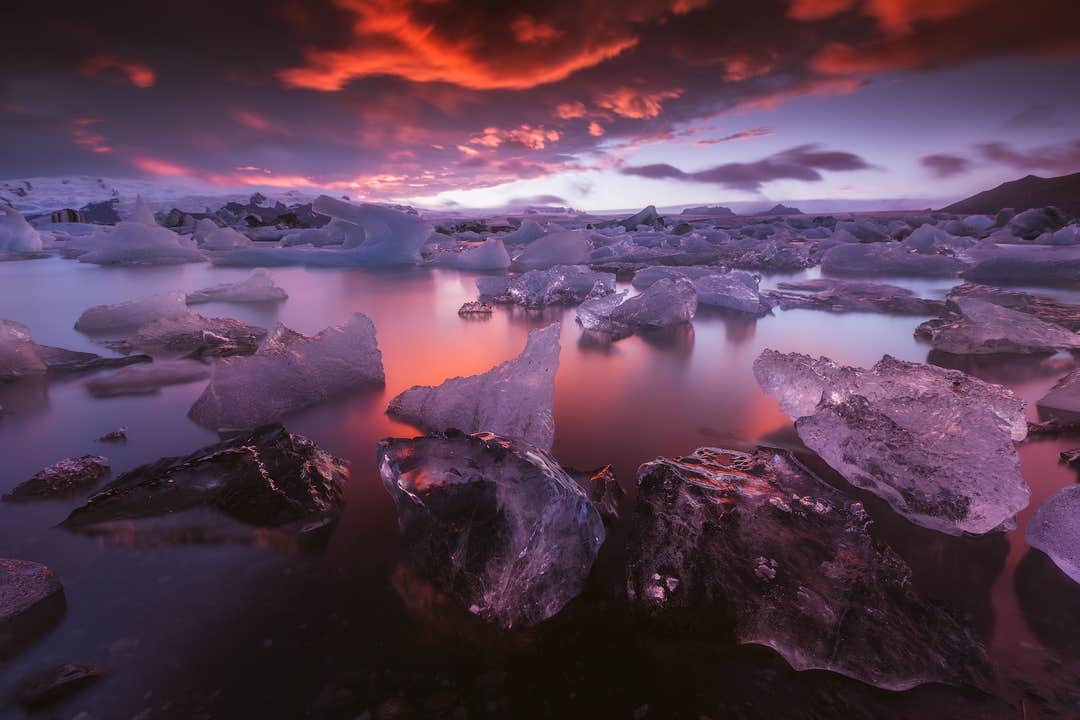Heute ist der erste Tag deines Foto-Workshops in Island. Ein erfahrener Guide holt dich an deiner Unterkunft ab und fährt mit dir in einem geräumigen, bequemen Minibus an der idyllischen Südküste entlang. Du wirst nicht lange brauchen, um zu verstehen, warum diese Region bei Besuchern so beliebt ist.
Deine erste Station ist der Wasserfall Seljalandsfoss, der für die kleine Höhle berühmt ist, die sich hinter der Kaskade in der Felswand befindet. Da man den Wasserfall auf diesem Wege zu Fuß umrunden kann, bieten sich für Fotografen ungeahnte und einmalige Perspektiven.
Nicht weit entfernt liegt Skógafoss, ein breiter Wasserfall, der von einer riesigen Sprühnebelwolke umgeben ist. Sie entsteht, wenn das Wasser auf dem felsigen Untergrund aufschlägt. Besucher können den Wasserfall von unten fotografieren oder die Treppe nach oben klettern und von dort ein außergewöhnliches Foto machen.
Danach gelangst du bald zur Halbinsel Dyrhólaey. Sie war einst von der Hauptinsel getrennt, bildet jetzt aber ihre Südspitze. Die Halbinsel bietet einen absolut überwältigenden Blick auf die Südküste. Hier kannst du nistende Papageientaucher und den riesigen Felsbogen am Ende der Landzunge fotografieren.
Außerdem besuchst du den schwarzen Sandstrand Reynisfjara, der für seine imposanten Felsformationen und die nahegelegene, hübsche Ortschaft Vík í Mýrdal berühmt ist. Du wirst Gelegenheit haben, beide zu fotografieren, und dein Guide wird auch darauf achten, dass du eine Aufnahme der legendären Felsnadeln Reynisdrangar mit nach Hause nimmst.
Wenn der Tag sich dem Ende zuneigt, setzt du deine Reise in Richtung des Naturreservats Skaftafell fort. Die Strecke führt dich vorbei an schwarzen Sandwüsten und hohen Bergen. Im Nationalpark angekommen, kannst du noch schnell ein paar Fotos machen und ziehst dich dann in deine Unterkunft zurück.
















